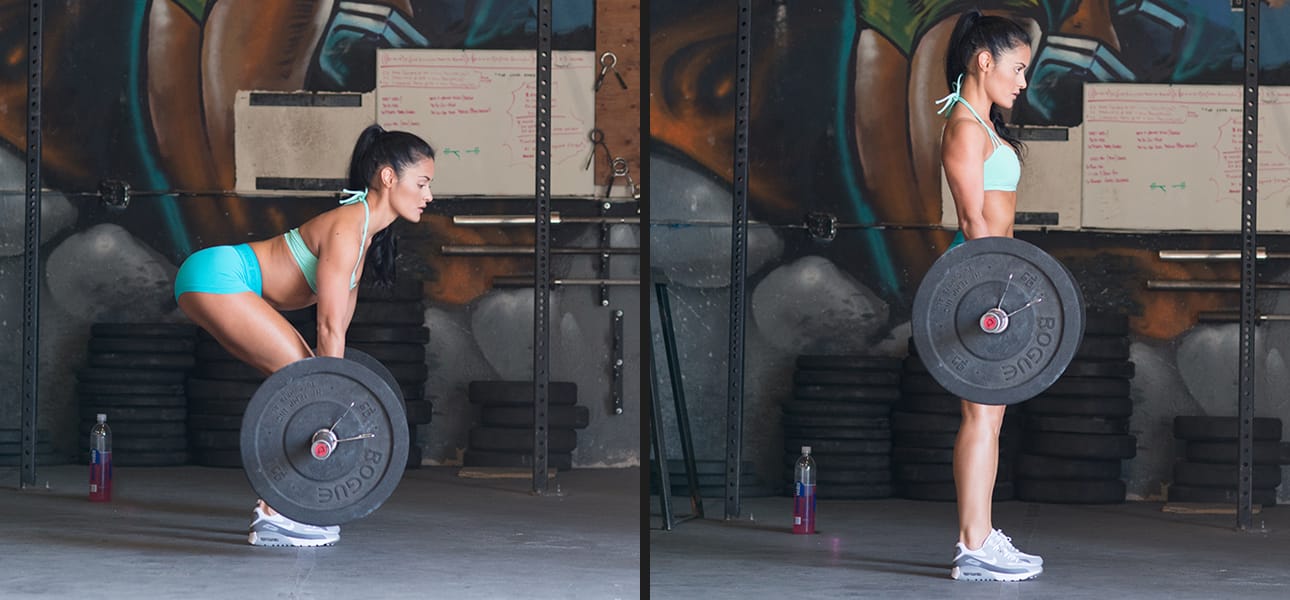No Products in the Cart


The deadlift is many things. It involves the activation of a vast number of muscles from top to bottom. As a student of all disciplines in the fitness world, I keep an open ear and open mind, because one never knows when someone has connected two dots or helps you to do just that. That said, one of the things I have become adamant about in my field is the deadlift. I do not claim to be a record holding or competitive power lifter; my stars have never aligned with training those movements to that degree. However, I study, learn from, and have trained many in this area. Knowledge is, and will always be, my first ambition before physical achievement.
Allow me to break it to you easy: THE DEADLIFT IS NOT A BACK MOVEMENT!
Again, deadlifts do engage MANY muscles of the body. However, when classifying a movement, you must approach it with the primary mover in mind. The barbell row, for example, uses the biceps and forearm, but would you classify it and utilize it as an arm movement? Of course not.
I’ve seen many powerlifters, power builders, and general fitness folks pulling to become erect atop the deadlift with their head and their back. The majority of those people have eventually needed to hold off on deadlift training as they begin to have lower back pain (or worse).
The erector spinae is, in fact, involved in the deadlift movement. But similar to the forearm, it is not to be utilized as the primary mover. In the proper position and movement pattern of a deadlift, the back is to remain straight, with shoulders depressed and retracted. Lats are engaged, pushing through the middle of the foot. In this position, is there any more room for your erector spinae to contract further back?
The erector spinae is comprised of three muscles, the iliocostalis, longissimus, and spinalis. The group is utilized as a counter force of bending forward, or antagonist of the abdominals; they are also a powerful erector to come back to a neutral spine.
The proper muscle to use in the position of a proper deadlift is the gluteus maximus. Your gluteus is where the power comes from; it is going to drive your chest up, head back, and most importantly, hips forward. In the entire movement of a deadlift, your back should remain in a neutral position. The point is to drive your head to the ceiling and shoot your hips forward.
In a study published in the journal Spine, muscle activation was sought out during a deadlift using electromyography (a test that identifies contraction in moving muscles). The deadlift activated muscles in the following ways: The latissimus dorsi reached 70% activity; the erector spinae 60%, the gluteus maximus 75%, and the quadriceps about 50%. These data support the notion that not only is the deadlift focused on the posterior activation of the body, but that the glutes are the major mover. The gluteus maximus had 15% more activation than the erector spinae, and even the lats were engaged 10% more than the erector spinae.
The weight on the bar you are using pulls the latissimus into contraction; this causes the trapezious to engage and counter that load. Neither of them changes length; they only stabilize the load and your core. The quadriceps, with the lowest activation of the group, are engaged at the bottom of the deadlift, which is where the most erector spinae activation lies. Once you reach the beginning stages of the deadlift, your quads become less involved and the gluteus should be trained to explode through.
To help you with visualization, imagine a vertical jump. You may not be a very good jumper BUT you are able to jump. The deadlift is training your body to become more powerful in the movement pattern very similar to a vertical jump. If you can, stand up, get down to the bottom of a jumping position and explode up, or watch someone else do it. Don’t let them know why they are doing it (to get a more natural movement). The best jumpers understand they want all force production moving in a vertical direction, moving the load of their body through the air to a perfectly erect position to get maximum height. If you notice, their back will be straight and their hips will snap forward to become erect.
The deadlift involves many muscles but their roles are all separate. I invite you to begin performing your deadlifts on shoulder day and your squats on leg day, if your split separates them. The reason for this is that the deadlift is a wonderful prehab (warmup) movement for the shoulders! It gears up and activates all of the shoulder muscles, preparing them to stay well within the shoulder socket.
Noe, DA, Mostardi, RA, Jackson, ME, Porterfield, JA, and Askew, MJ. Myoelectric Activity and Sequencing of Selected Trunk Muscles During Isokinetic Lifting. Spine 17(2): 225‐229, 1992.
Someone purchsed a